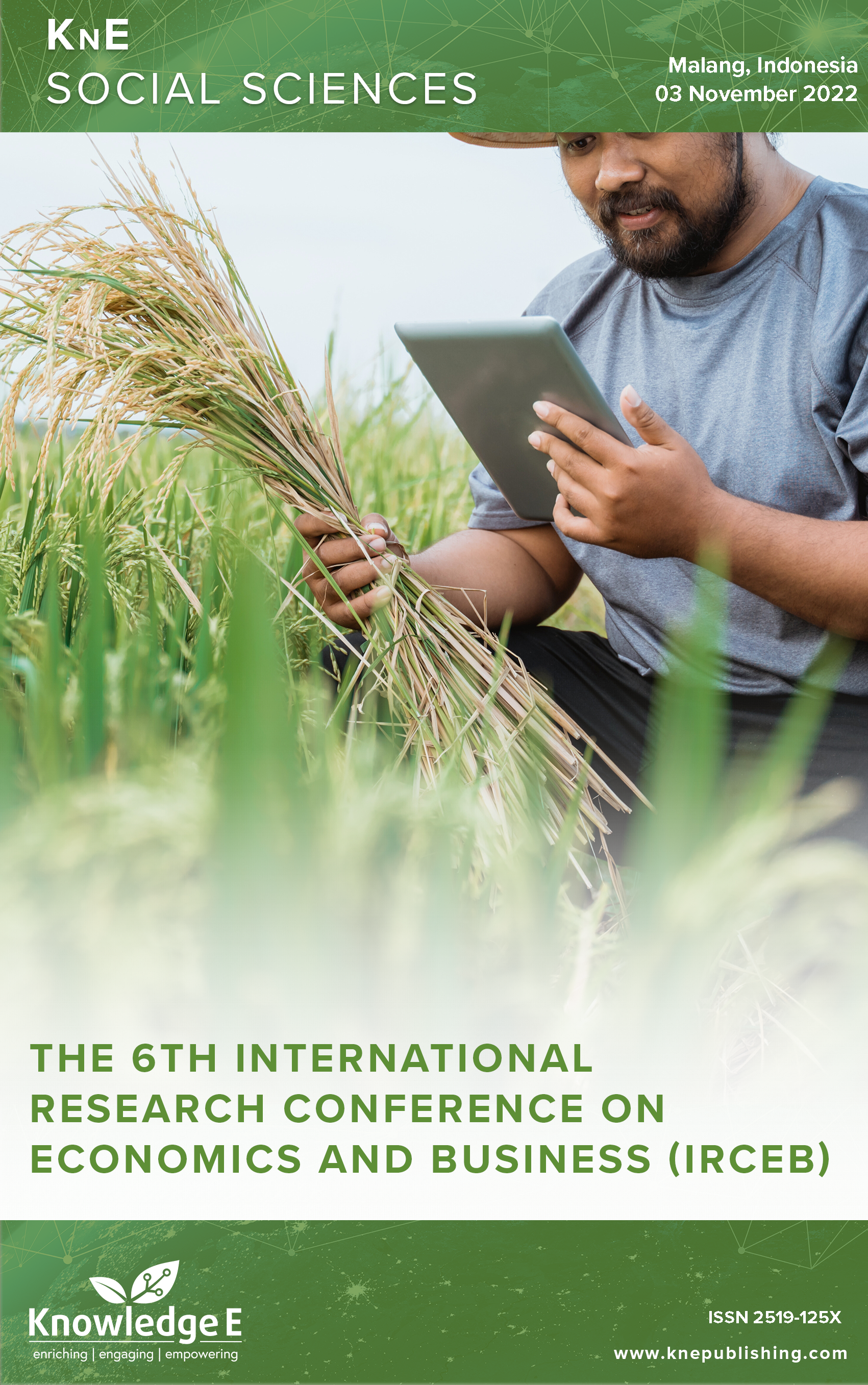Environmental Kuznets Curve Hypothesis: Before and After Sustainable Development Goals
DOI:
https://doi.org/10.18502/kss.v9i4.15054Abstract
The Environmental Kuznets Curve (EKC) hypothesis is an idea that examines the inverse “U” curve relationship between environmental degradation and economic development. This study contributes to analyzing the application of EKC hypothesis in G20 participating countries, as well as the relationship between the variables of gross domestic product (GDP), foreign direct investment (FDI), population, and renewable energy on environmental degradation represented by ecological footprint variables in the same area by comparing the period before and after the implementation of the SDGs. This study uses the panel data regression method for the period 2011-2018, where data is obtained from the World Bank and the Global Footprint Network. The results show that from 2011-2018 the EKC hypothesis formed an inverted U-curve. This study also shows that before the SDGs (2015) the variables of GDP, FDI, population, and renewable energy had an effect on increasing the value of the ecological footprint. Meanwhile, after the implementation of the SDGs program, the variables of GDP, FDI, population, and renewable energy contributed to reducing the value of the ecological footprint, which indicated a decrease in people’s dependence on natural resources. Where the GDP variable has a positive and significant effect and the renewable energy variable has a negative and significant effect. While FDI and population variables have a positive but insignificant effect.
Keywords: EF, EKC, FDI, GDP, GDP2, POP, RE, SDGs
References
Alvarado R, Toledo E. Environmental degradation and economic growth: evidence for a developing country. Environ Dev Sustain. 2017;19(4):1205–1218. DOI: https://doi.org/10.1007/s10668-016-9790-y
Barbier EB, Markandya A, Pearce DW. Environmental sustainability and cost-benefit analysis. Environ Plann A. 1990;22(9):1259–1266. DOI: https://doi.org/10.1068/a221259
Galli A, Iha K, Moreno Pires S, Mancini MS, Alves A, Zokai G, et al. Assessing the ecological footprint and biocapacity of Portuguese cities: Critical results for environmental awareness and local management. Cities. 2020;96:102442. DOI: https://doi.org/10.1016/j.cities.2019.102442
Hajar I. Peran Center for Internasional Forestry Research (CIFOR) Di Indonesia Terkait Mekanisme Reducing Emission from Deforestation and Forest Degradation (REDD)2007-2014. Jurnal Online Mahasiswa Fakultas Ilmu Sosial Dan Ilmu Politik Universitas Riau. 2017;4(1):1–10.
Ibrahim MD, Hasyim M, Abbas I. Existence of the Environmental Kuznets Curve and its relevance to SDGs policy : A study in Java region. Indonesia. 2022;5(2):162–174. DOI: https://doi.org/10.31328/jsed.v5i2.3657
Mosconi EM, Colantoni A, Gambella F, Cudlinová E, Salvati L, Rodrigo-Comino J. Revisiting the environmental kuznets curve: The spatial interaction between economy and territory. Economies. 2020;8(3). https://doi.org/10.3390/economies8030074 DOI: https://doi.org/10.3390/economies8030074
Nikensari SI, Destilawati S, Nurjanah S. Studi Environmental Kuznets Curve Di Asia: Sebelum Dan Setelah Millennium Development Goals. Jurnal Ekonomi Pembangunan. 2019;27(2):11–25. DOI: https://doi.org/10.14203/JEP.27.2.2019.11-25
Pratama YP. Konsensus Kemitraan Global PBB (MDGs & SDGs), Hipotesis Environmental Kuznets Curve (EKC), dan Degradasi Kualitas Udara di Indonesia Periode 1980-2018. Diponegoro Journal of Economics. 2020;9(4):1–15.
Priyagus. Pertumbuhan Ekonomi dan Degradasi Lingkungan Air di Wilayah Kalimantan dan Indonesia Analisis Enviromental Kuznet Curve (EKC). FEB-UNMUL : Samarinda. 2017;1:223–231.
Santi R, Sasana H. Analisis Pengaruh Pertumbuhan Ekonomi, Jumlah Penduduk, Foreign Direct Investment (FDI), Energi Use/Consumption dan Krisis Ekonomi Terhadap Kualitas Lingkungan Ditinjau dari Tingkat Carbon Footprint di ASEAN 8. Diponegoro Journal of Economics. 2020;2(2):1–11. DOI: https://doi.org/10.14710/djoe.31595
Silvia M, Astuti W, Rahmayani D. Analisis Pengaruh Investasi Langsung Asing dan Pertumbuhan Ekonomi Terhadap Degradasi Lingkungan di Negara ASEAN Berpendapatan Menengah. Seminar Nasional Fakultas Ekonomi Universitas Tidar. 2021;(September):25–32.

